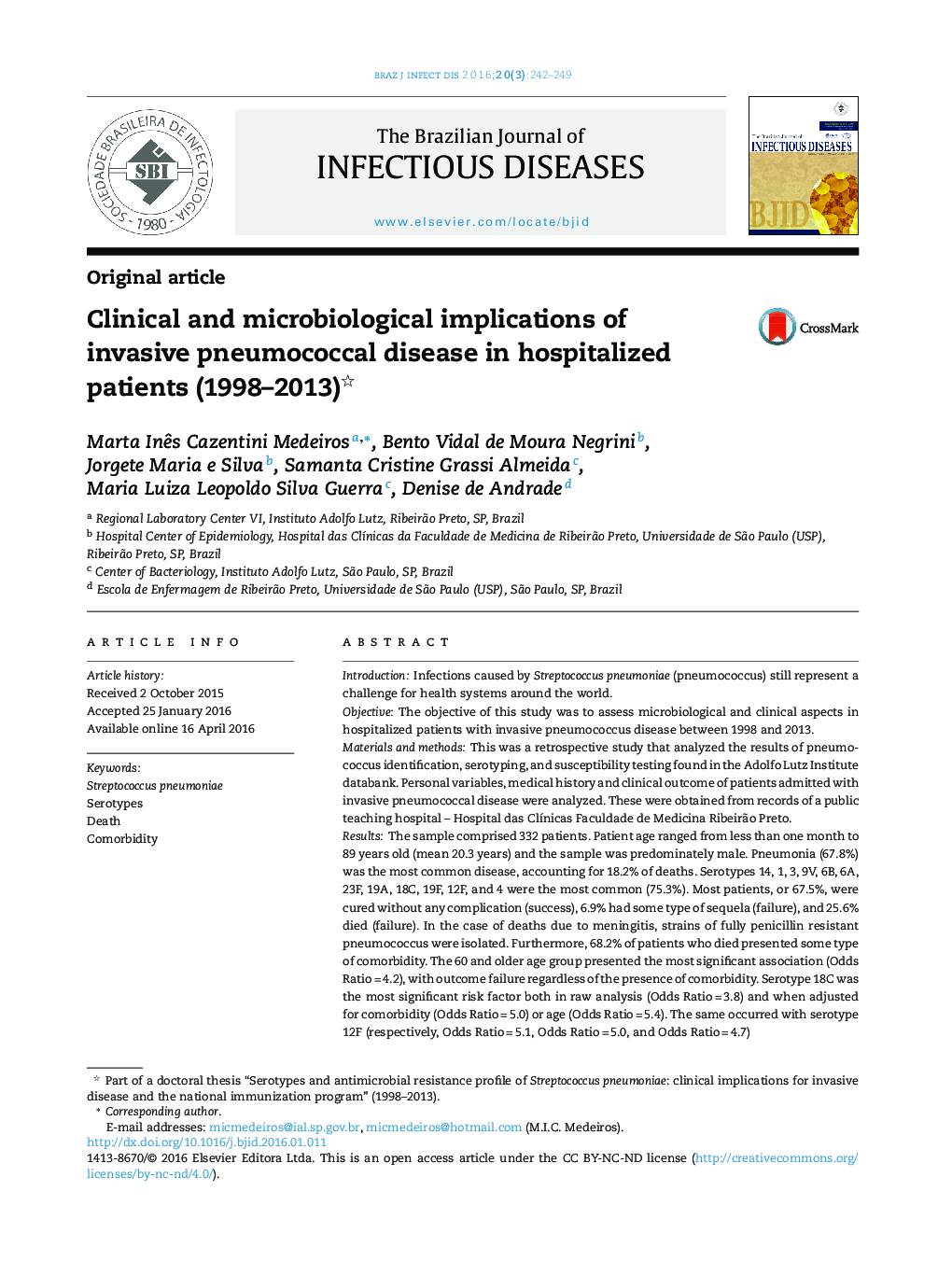| Article ID | Journal | Published Year | Pages | File Type |
|---|---|---|---|---|
| 3343689 | The Brazilian Journal of Infectious Diseases | 2016 | 8 Pages |
IntroductionInfections caused by Streptococcus pneumoniae (pneumococcus) still represent a challenge for health systems around the world.ObjectiveThe objective of this study was to assess microbiological and clinical aspects in hospitalized patients with invasive pneumococcus disease between 1998 and 2013.Materials and methodsThis was a retrospective study that analyzed the results of pneumococcus identification, serotyping, and susceptibility testing found in the Adolfo Lutz Institute databank. Personal variables, medical history and clinical outcome of patients admitted with invasive pneumococcal disease were analyzed. These were obtained from records of a public teaching hospital – Hospital das Clínicas Faculdade de Medicina Ribeirão Preto.ResultsThe sample comprised 332 patients. Patient age ranged from less than one month to 89 years old (mean 20.3 years) and the sample was predominately male. Pneumonia (67.8%) was the most common disease, accounting for 18.2% of deaths. Serotypes 14, 1, 3, 9V, 6B, 6A, 23F, 19A, 18C, 19F, 12F, and 4 were the most common (75.3%). Most patients, or 67.5%, were cured without any complication (success), 6.9% had some type of sequela (failure), and 25.6% died (failure). In the case of deaths due to meningitis, strains of fully penicillin resistant pneumococcus were isolated. Furthermore, 68.2% of patients who died presented some type of comorbidity. The 60 and older age group presented the most significant association (Odds Ratio = 4.2), with outcome failure regardless of the presence of comorbidity. Serotype 18C was the most significant risk factor both in raw analysis (Odds Ratio = 3.8) and when adjusted for comorbidity (Odds Ratio = 5.0) or age (Odds Ratio = 5.4). The same occurred with serotype 12F (respectively, Odds Ratio = 5.1, Odds Ratio = 5.0, and Odds Ratio = 4.7)ConclusionThe present findings highlight the importance of IPD among young adults and older adults. In the era of conjugate vaccines, monitoring serotypes in different age groups is essential to assess the impact and adequacy of immunization.
